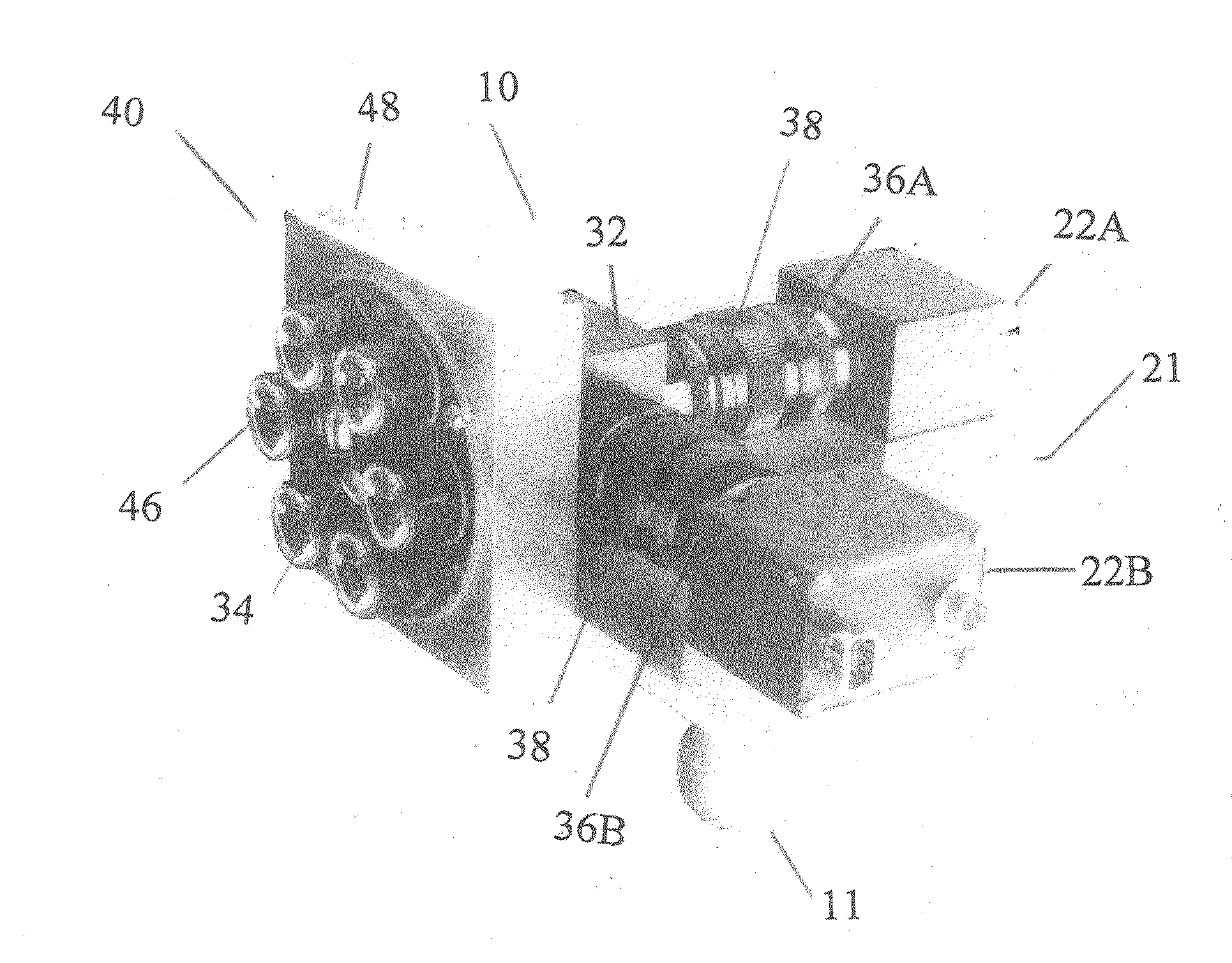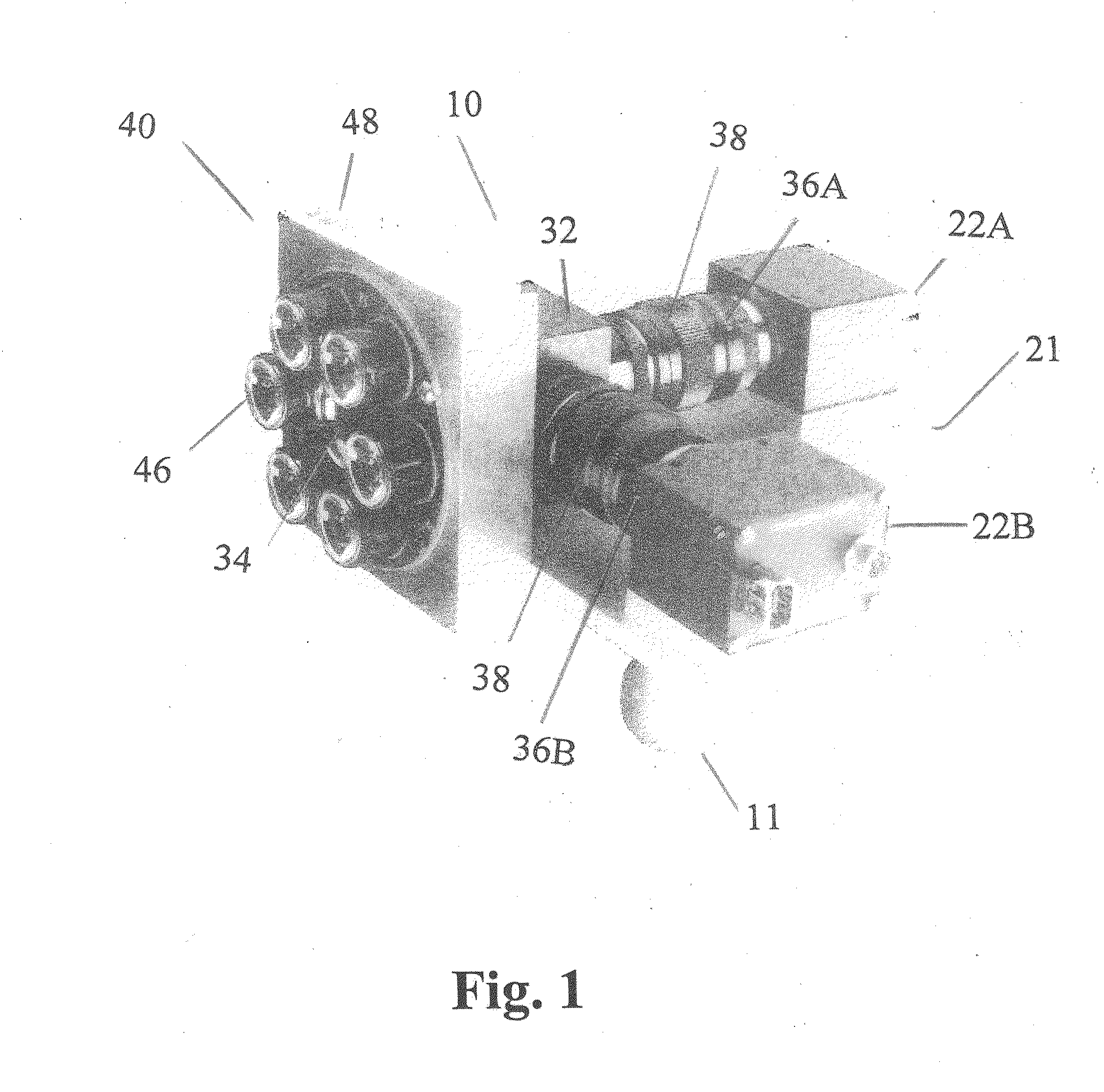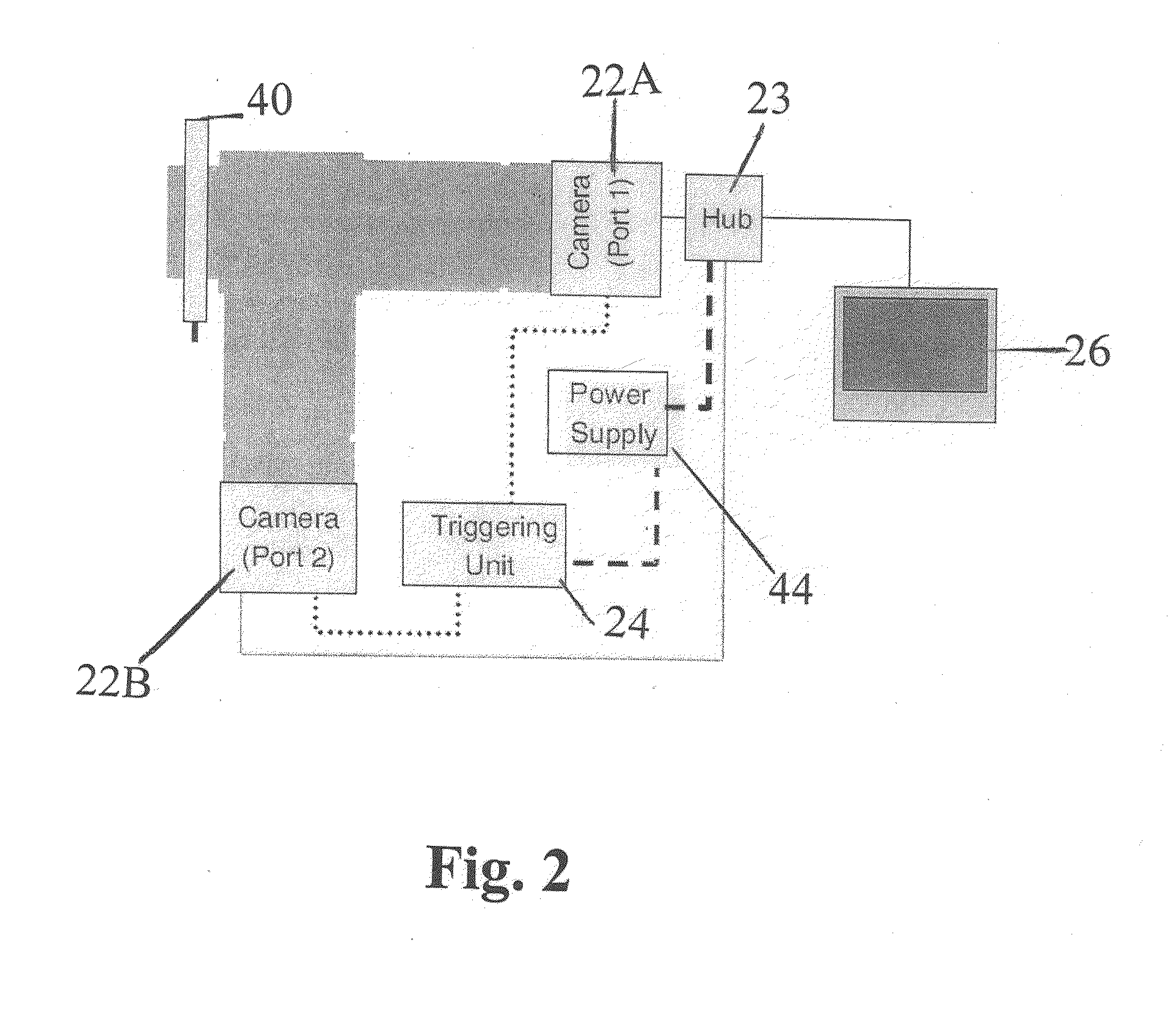Portable multispectral imaging systems
a multi-spectral imaging and portable technology, applied in the field of multi-spectral imaging systems, can solve the problems of affecting the quality of food, affecting the accuracy of food identification, so as to improve the accuracy and dependability, and achieve the effect of positively identifying the contaminants of foods
- Summary
- Abstract
- Description
- Claims
- Application Information
AI Technical Summary
Benefits of technology
Problems solved by technology
Method used
Image
Examples
example 1
[0064]A series of two-band images were collected to evaluate system 10 calibration accuracy. With System 10 fixed on an optical table (Model 784-439, TMC, Peabody, Mass.), the distortion target was placed perpendicular to the optical axis of imaging system 10 at five different distances: approximately 50, 55, 60, 65, and 70 cm. The same illumination system used for acquiring the image shown in FIG. 4 was used for the image collection. Two-band images were taken at each distance and subsequently calibrated as described above in the detailed description of the invention. The centroids of each dot were determined by a customized image processing method: simple thresholding identified the pixels that represented each dot. The dot's centroids were calculated by averaging their pixel locations. The image misalignment error was determined by calculating the offset distance of corresponding centroids between the two-band images.
[0065]As a result of system 10 calibration, two-band images are...
example 2
[0068]The imaging system and the image correction algorithm were tested with chicken carcass contaminated with chicken feces (duodenum, cecum, colon) and ingesta. Sample chicken carcasses were obtained from a local poultry processing factory after an evisceration and washing process. In addition, unprocessed carcasses were also obtained and these unprocessed carcasses were manually eviscerated to collect fecal samples. Each carcass was hung on a stationary shackle upside down facing imaging system 10 at a object distance of approximately 60 cm nominal working distance. Fecal and ingesta samples were manually applied to the carcass surface at several locations. Two-band images were acquired by imaging system 10 using LED light.
[0069]FIG. 7 shows one of the images of a chicken carcass taken by imaging system 10 and the detection results based on a band-ratio algorithm. Four types of contaminant materials, duodenum, cecum, colon, and ingesta, were manually deposited on the chicken carc...
example 3
[0070]To test the new calibration algorithm for imaging system 50, a series of three-band images were collected to evaluate system's 50 calibration accuracy. With the imaging system fixed on an optical table, the distortion target was placed perpendicular to the optical axis of the imaging system 51 at four different distances with about 10 cm separation. Band images were taken at each distance and subsequently calibrated by the above described method for system 50. For evaluating the calibration accuracy, the image of port 1 and port 2 were used. The image misalignment error was calculated to be the offset of corresponding centroids of each dot between port 1 and port 2 images.
[0071]FIGS. 11a and 11b show the results of the system calibration. As a result of the system calibration, the band image was aligned accurately. FIG. 12a shows that the misalignment of the images of the distortion target, which was apparent in FIGS. 11a and 11b, was corrected; all dots were accurately aligne...
PUM
 Login to View More
Login to View More Abstract
Description
Claims
Application Information
 Login to View More
Login to View More - R&D
- Intellectual Property
- Life Sciences
- Materials
- Tech Scout
- Unparalleled Data Quality
- Higher Quality Content
- 60% Fewer Hallucinations
Browse by: Latest US Patents, China's latest patents, Technical Efficacy Thesaurus, Application Domain, Technology Topic, Popular Technical Reports.
© 2025 PatSnap. All rights reserved.Legal|Privacy policy|Modern Slavery Act Transparency Statement|Sitemap|About US| Contact US: help@patsnap.com



